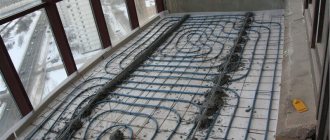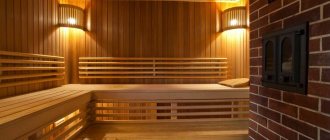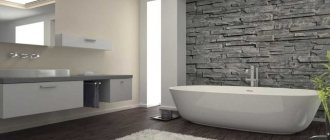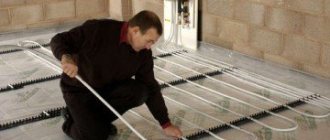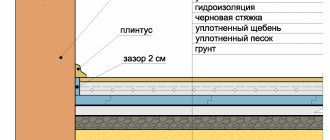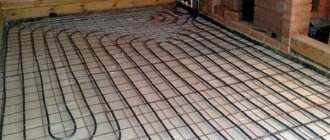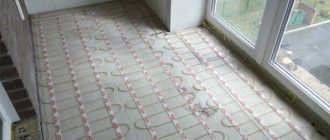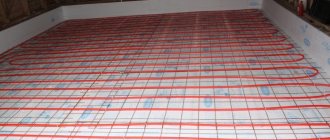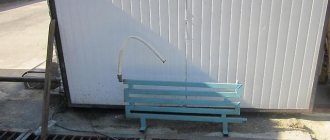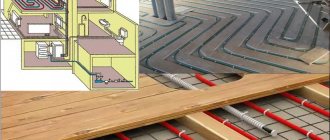Required parameters
There is no universal figure for the thickness of the screed. This indicator is determined taking into account factors such as the type of soil, if it is a private house, the purpose of the rooms is also taken into account. There are also other nuances such as the material and features of the fittings.
There are mixtures on the building materials market that allow you to make a pour that is not too thick. With the help of these compositions, a flat surface is obtained, suitable for further installation of the finish.
In general, the thickness of the screed for a water-heated floor should hide every element of the system. The indicator is also affected by the diameter of the pipes, the diameter of which should be up to 2.5 cm. From this we can conclude that a screed 5-7 cm thick is sufficient.
But the use of a heating system contributes to the expansion of the concrete layer and finish. Therefore, you will need a screed that does not allow significant deformation of the finish coating and maintains thermal conductivity.
Most experts say that there is no need for a screed that is too thick, but up to 5 cm of the mixture should lie above the pipes. Exceeding this indicator leads to high energy consumption and difficulties in controlling the heating intensity.
It is important that the filling can hide the pipes Source www.ivd.ru
Permissible minimum
There are certain standards for how a screed should be arranged:
- If the mixture is such that it will level itself, then 2 cm will be enough.
- If cement mortar is used, a thickness of 4 cm is required.
If the recommended thickness is not followed, the floor will not be as durable and will not last as long as it should.
Before pouring the heated floor, visible unevenness is eliminated; a rough screed is also required.
If the room is intended for increased load, then you need to take indicators higher than those indicated. This is necessary for renovation work carried out in the bathroom, kitchen or technical room.
Features of pouring heated floors
Before pouring the screed, you need to conduct a hydraulic test. Acceptable pressure is considered to be within 0.3 MPa.
To obtain a high-quality concrete base, it is advisable to use M400 cement and a plasticizer.
You can check how well the underfloor heating system works 4 weeks after installation work. At first the temperature should not be higher than 25°C. Then it can be gradually increased by 5°C until the optimal value is reached.
Before pouring, the condition of the pipes is checked Source i.ytimg.com
How to properly make a screed on a heated floor with your own hands
It’s easy to correctly pour the concrete mixture with your own hands, adhering to proven technology.
The set of measures for laying the finished mixture on a water floor includes the following steps:
- Preparatory.
- Filling.
- Finishing.
At the preparatory stage, which determines the service life of the foundation, perform the following activities:
- Clear the room.
- Provide power supply.
- Remove the old covering.
- Level the base and fill the cracks.
- Apply adhesive impregnation.
- Install the heating elements and lay the lines according to the diagram.
- Mark the floor level that should be after pouring.
- Lay the reinforcing mesh.
- Prepare the concrete mixture, observing the proportions.
- Fix the beacons in 1.5 m increments.
Lay the finished solution in the following order:
- Create pressure in the warm floor.
- Check for leaks.
- Lay and distribute the mixture evenly.
- Compact the mass, plan the surface.
Attention! Filling must be done in one go. This will create a homogeneous array.
The final stage includes:
- Ensuring the immobility of the solution.
- Periodic moisturizing.
- Sealing local defects after drying.
Important! Before carrying out work, consult with specialists about what is best to make a heated floor in the room, as well as what is the best composition to use.
Sequence of work
Before the screed, waterproofing, insulation and water-bearing pipes are laid. Be sure to reinforce the surface with metal mesh. It is important that each twig is at least 3 mm. The fittings should be at the bottom, and pipes are attached to it.
But there are experts who prefer to place the mesh above the water pipes for optimal load distribution. This will allow enough heat to escape from the concrete layer.
The waterproofing layer is applied over the rough screed using roll or liquid waterproofing. Next, they begin to install the insulation layer. Typically, dense polystyrene is chosen. The slabs are stacked compactly due to the presence of locking devices on the sides. The screed for heated floors is poured with concrete of such a consistency that it is easier to level. The solution is mixed by hand or with a concrete mixer. It uses 1 part cement and 4 parts sand, which is pre-sifted. Also add enough water to knead the dough-like mixture and a plasticizer for elasticity.
To make the screed strong, it is recommended to add fiber to the solution, which consists of synthetic fibrous materials.
Pouring the floor with mortar Source couo.ru
It is important to install it at the same time. You cannot fill one area and then do the rest a few days later. If you do this, cracks will appear in the future.
You should check the condition of the pipes; when the concrete hardens, there will be no access to them. Test the system by connecting the operating water pressure and check for leaks during the day. If smudges appear, they must be eliminated and only then proceed with filling.
What is a screed for heated floors?
In the process of forming a heated floor system, the following types of screeds are used, differing in purpose:
- rough.
It evens out differences and is the basis for installing a heated floor. Filled over primer that improves adhesion to the surface. The functions of the rough foundation can be performed by concrete slabs that form the floor, or wooden floors on which thermal insulation is laid;
Screed - a layer of concrete or mortar applied on top of any surface
- finishing
It is a protective coating for heating communications, which is an element of the heating system and ensures uniform transfer of thermal energy. Guarantees the integrity of electrical cables, water pipes and heating mats, forming a base for tiles or laminate.
Reliable thermal insulation of a heated floor, which is the basis for screeding, as well as laying cable lines and water pipes, is a serious point ensuring:
- reduction of heat losses;
- rational energy consumption;
- uniform heat distribution.
Fulfillment of the assigned tasks is achieved by installing the following types of thermal insulation:
- penoplex, which is extruded polystyrene foam;
- substrates made of cork material;
- penofol made from polypropylene.
Classic screed for heated floors - cement-sand
The foil layer applied to the surface of these materials protects the thermal insulation from contact with the solution and ensures the preservation of thermal insulation characteristics.
Important! Before pouring the finishing screed, it is necessary to pressurize the elements of the water system and check the pipe connections under pressure for leaks.
Ensuring the integrity of the formed base and the absence of cracks is ensured by:
- by introducing polypropylene fiber into the concrete solution. Durable fiber reduces shrinkage and increases strength;
- reinforcing the surface with mesh. The metal mesh retains the solidity of the solution after hardening;
- expansion seams. Performed on all types of substrates to prevent cracking;
- adding plasticizers. They improve the quality of the solution, which, after hardening, is subject to temperature changes.
The following materials are used to make the screed:
- Dry.
A ready-made composition is used, which is poured onto the floor without using water, followed by installation of plywood or gypsum fiber sheets. The lightweight base reduces the load on the floor slabs.
Often, special plasticizers are added to the screed for heated floors, and expanded clay or crushed stone is used to save cement.
- Semi-dry.
The increased concentration of Portland cement and sand, as well as the reduced volume of added water, ensures rapid hardening. Fiber is introduced to reduce shrinkage and increase strength. - Concrete.
Compensates for height differences. Prepared from available materials. May contain expanded clay filler, which improves thermal insulation.
Attention! The strength characteristics of the base depend on what kind of sand is used. It is necessary to use pre-sifted sand that is free of vegetation residues, large rocky inclusions, clay and debris. Coarse sand provides better adhesion of ingredients during hardening and increases strength.
Video description
In this video you will see the secrets of good screed filling:
The mixture is laid out in small slides. A shovel is used to level them. Pouring a heated floor with a perfectly flat surface is not always possible. Therefore, in order to achieve this result, the solution is laid above the established profile. The next morning they come and remove the excess. But you don’t need to wait until the mixture hardens completely. It should harden a little.
Upon completion of the work, they begin to remove the guide profiles. The places where they were are treated with cement mortar and leveled.
Finally, a small amount of water is applied to the surface and covered with a polyethylene film. This will prevent the base from cracking. To prevent the floor from drying out too quickly, it needs to be moistened for at least 3 days.
See also: Catalog of companies that specialize in heating systems.
Choice
To decide which screed is best for a warm water floor, it is worth considering the methods of its manufacture.
Concrete
To mix the solution, use cement of a grade no lower than M-300, mixing it with sand or screenings. The mixture is diluted with water, bringing it to a state in which the finished solution becomes similar to sour cream. Find out about the consumption of cement-sand mixture per 1 m2 here.
Concrete
The advantages of such a screed are higher strength and relatively low costs for its construction. The disadvantage is that it takes a long time to completely dry (about one month). This link will tell you about the fiber consumption for concrete floor screed.
For more information about concrete screed, watch the video:
Semi-dry
A semi-dry screed is formed using a cement-sand mixture to which polymer modifiers are added. The main difference between this method and the previous one is the presence of a small amount of water in the solution.
Semi-dry
Thanks to this, a semi-dry screed dries much faster than a wet one, which reduces the time required to complete the work.
Dry
Dry floor screed is suitable for installing heated floors on wooden floors, where cement-sand screed cannot be used due to its heavy weight. In this case, insulation is laid between the joists, then an OSB base on which the heating circuit pipes are mounted.
Dry
Pieces of GVL slabs are laid between the pipes (in several layers, the number of which depends on the thickness of the heated floor structure). The voids between the sheets and the heating elements are covered with tile adhesive. GVL sheets are also mounted on top of the pipes.
Is it possible to make a floor without screed?
They prefer to install warm floors without screed where filling cannot or is undesirable to be installed. For example, in rooms with low ceilings. There are two options for this floor:
- Made from polystyrene . The system consists of mats and a heating circuit. Installation of mats is possible on logs, wood and concrete floors.
- Made of wood . The floor is laid on a base made of wooden plates with channels for pipes.
Laying heated floors on a wooden base Source remont-samomy.ru
Concrete screed for heated floors
Using cement screed to fill a heated floor is a traditional construction technique. Before pouring the solution, a reinforcing mesh is installed to prevent the formation of cracks. The concrete mass provides reliable protection of the water main and maintains its integrity during temperature fluctuations.
The tie must be done carefully to prevent possible damage to the cable.
The concrete composition contains the following ingredients:
- The binder is cement grade M400.
- Filler – fine screenings with a particle size of 4–6 mm.
- Plasticizing components that increase strength and accelerate hydration.
- Water added until the concrete has a creamy consistency.
The amount of plasticizers is calculated depending on the brand of Portland cement and the required layer thickness. The introduction of additives in an amount of 0.4 kg per bag of M400 cement makes it possible to reduce the thickness of the poured concrete to 30 mm. The proportion of mixed screenings with cement is 4:1.
Advantages of cement mixture:
- abrasion resistance;
- long period of operation;
- high strength;
- uniform heat transfer.
Flaws:
- increased weight, increasing the load on the floor elements;
- long-term hardening, making further repairs difficult.
Briefly about the main thing
When installing a water floor, you must choose the correct thickness of the screed.
The layer must cover each heating element. Acceptable thickness is from 2 to 7 cm.
Before pouring, a hydraulic test is performed.
If the pipes are normal, proceed to laying a layer of insulation, waterproofing and screed.
To strengthen the surface, fiber is added to the solution.
There is less hassle with a floor without screed. There is no need to prepare a concrete solution; it is enough to install a system made of wood or polystyrene.
Ratings 0
Composition of screed for heated floors
The brand of concrete mortar used to construct a heated water floor depends on the area of use:
- a mixture marked M200 is used in lightly loaded residential buildings;
- composition of the M300 brand is used for installing floors of industrial enterprises.
If you need to fill large areas, you can order a ready-made mixture. When making your own, follow the following proportion (per 10 kg of solution):
- Portland cement grade M300 – 2 kg;
- sand with a particle size of 0.8–1 mm – 6 kg;
- water - up to 2 liters (to a creamy consistency).
The larger the volume of the cable, the greater the thickness of the concrete screed
Increasing the strength of the concrete mass is achieved in the following way:
- using fine screenings instead of sand. The proportion in this case is 6:1 (screening to cement);
- introducing fiber into the solution. The proportion is 1.5 dm³ per 10 m² of surface.
To ensure the elasticity of concrete exposed to temperature changes, the following are introduced:
- plasticizers (according to the manufacturer's recommendations);
- PVA glue (0.5 l per 25 kg of cement);
- liquid soap (150 ml per bag of cement).
Important! As the grade of cement used increases, the strength increases and the proportions change.
What affects the thickness of the screed
First of all, we will consider with you everything that affects the thickness of the heating cake. Moreover, how correctly to determine the thickness directly depends on:
- Operational life of the entire system.
- How evenly will the floor heat up?
- Thermal capacity of the floor.
It is clear that the thin base heats up very quickly. However, there is also a significant disadvantage. The thin surface of a heated floor heats up very quickly and because of this it can begin to crack.
This will especially be visible where the heating circuit of the heated floor is laid. Moreover, in this case, the floor covering will warm up above its normal level. For this reason, some coatings may deteriorate due to this. If it is very thick, then much more thermal energy will be required. As a result, this will greatly affect utility bills. Moreover, because of this, problems may arise in adjusting all heated floors, because the base will maintain a high temperature for a long time.
It is important to understand that the screed for a heated floor plays a role not only as a transmitter of thermal energy. The screed for heated floors serves as a means of protection against mechanical damage to the heating elements. So, if it is too thin, then it may not withstand a strong point load, which will lead to damage to the heating circuit. On the other hand, you should not fill it very thick for the reason that you will be installing heavy furniture.
As can be seen from the above, the thickness of the screed on a water-heated floor plays an important role. For this reason, it is important to choose it correctly. According to existing standards, the minimum thickness can be around 65 mm. This thickness will be sufficient only if tiles are laid further on the heated floor. This facing material will also contain high loads, for this reason there will be no damage to the heating circuit. As for the optimal thickness, it is 100 mm. For industrial or warehouse premises, the thickness of the screed on a warm water floor is allowed up to 200 mm.
So, what influences the choice of a particular screed thickness for a heated floor? First of all, it determines the diameter of the pipe. Next we will look at all these indicators.
